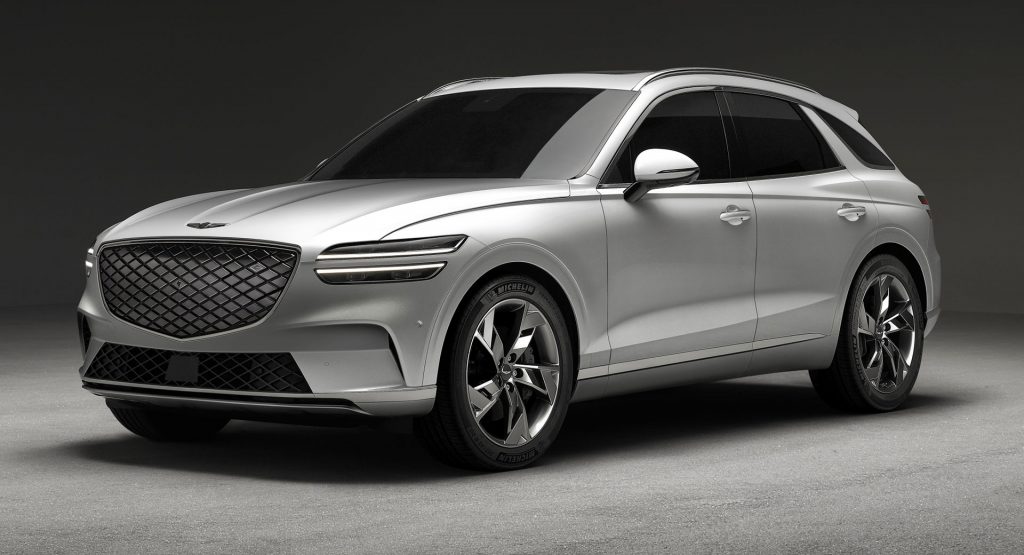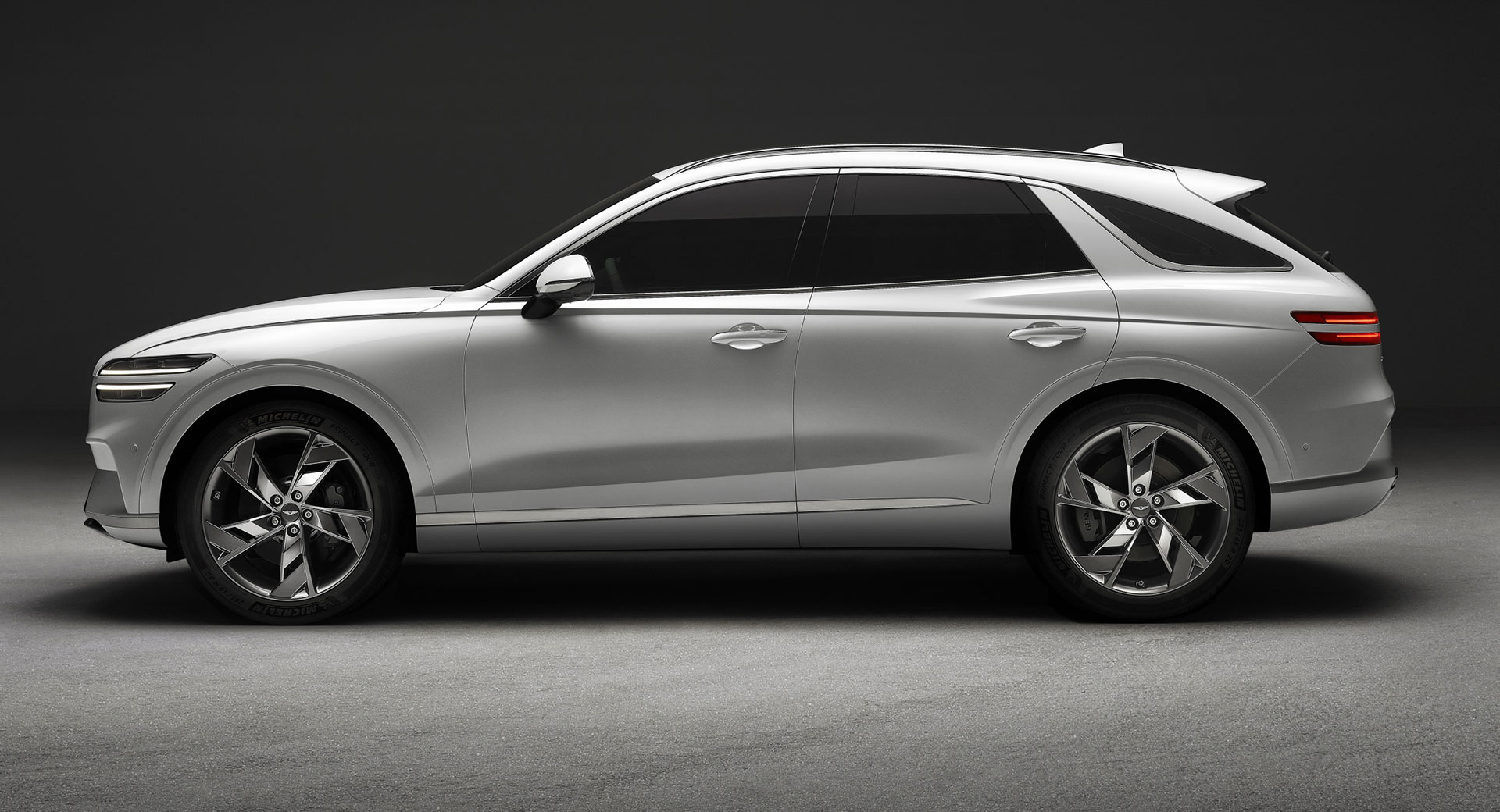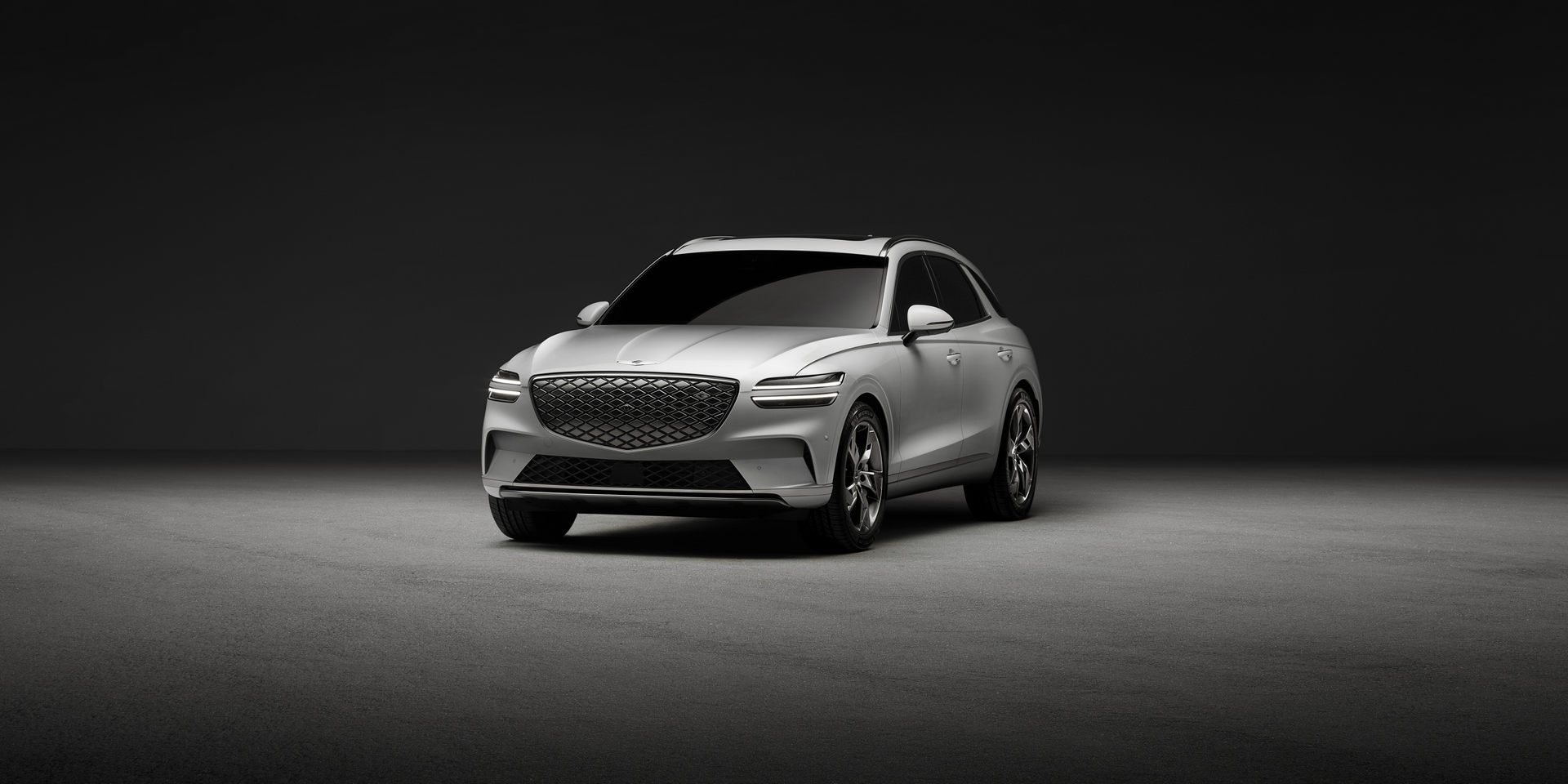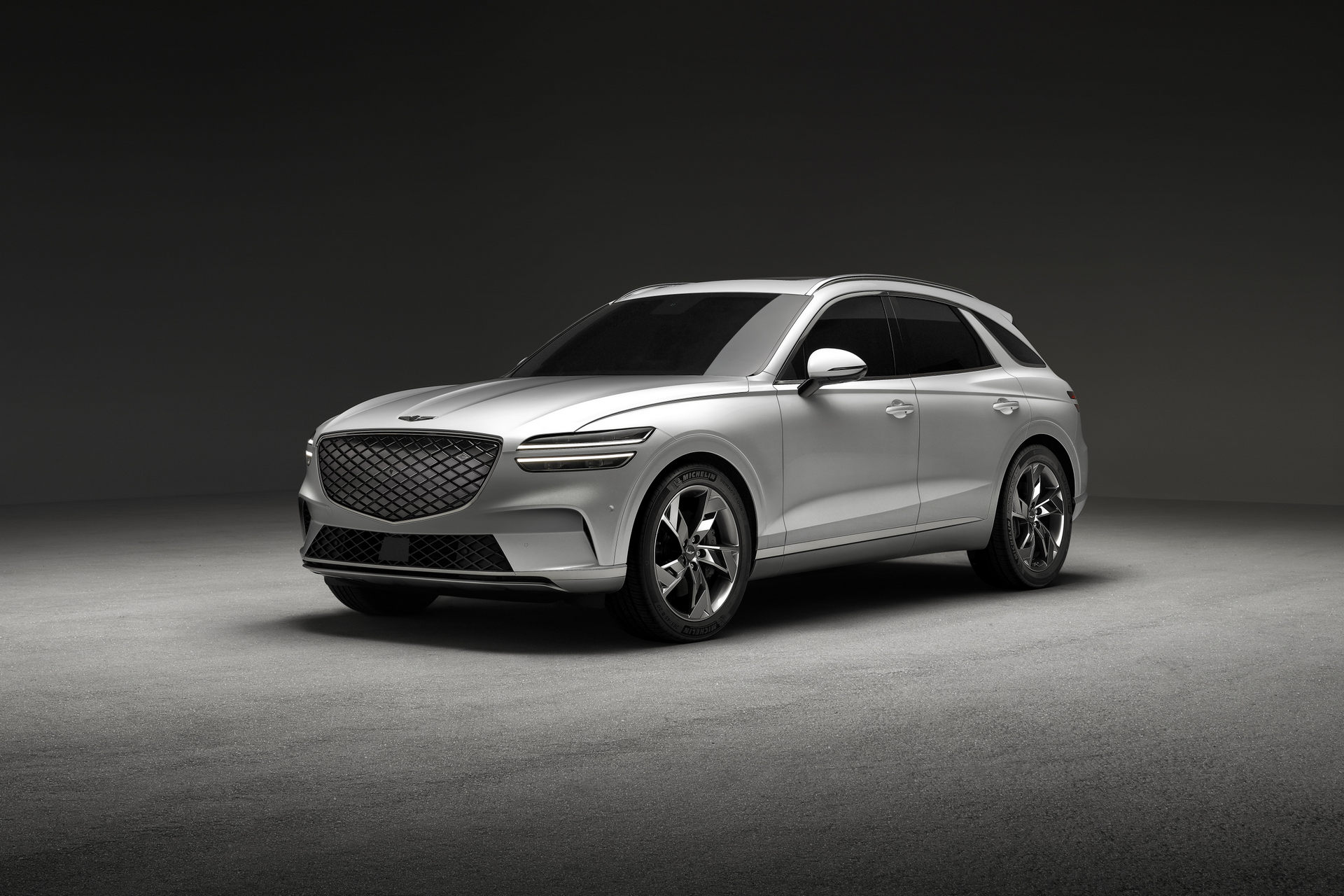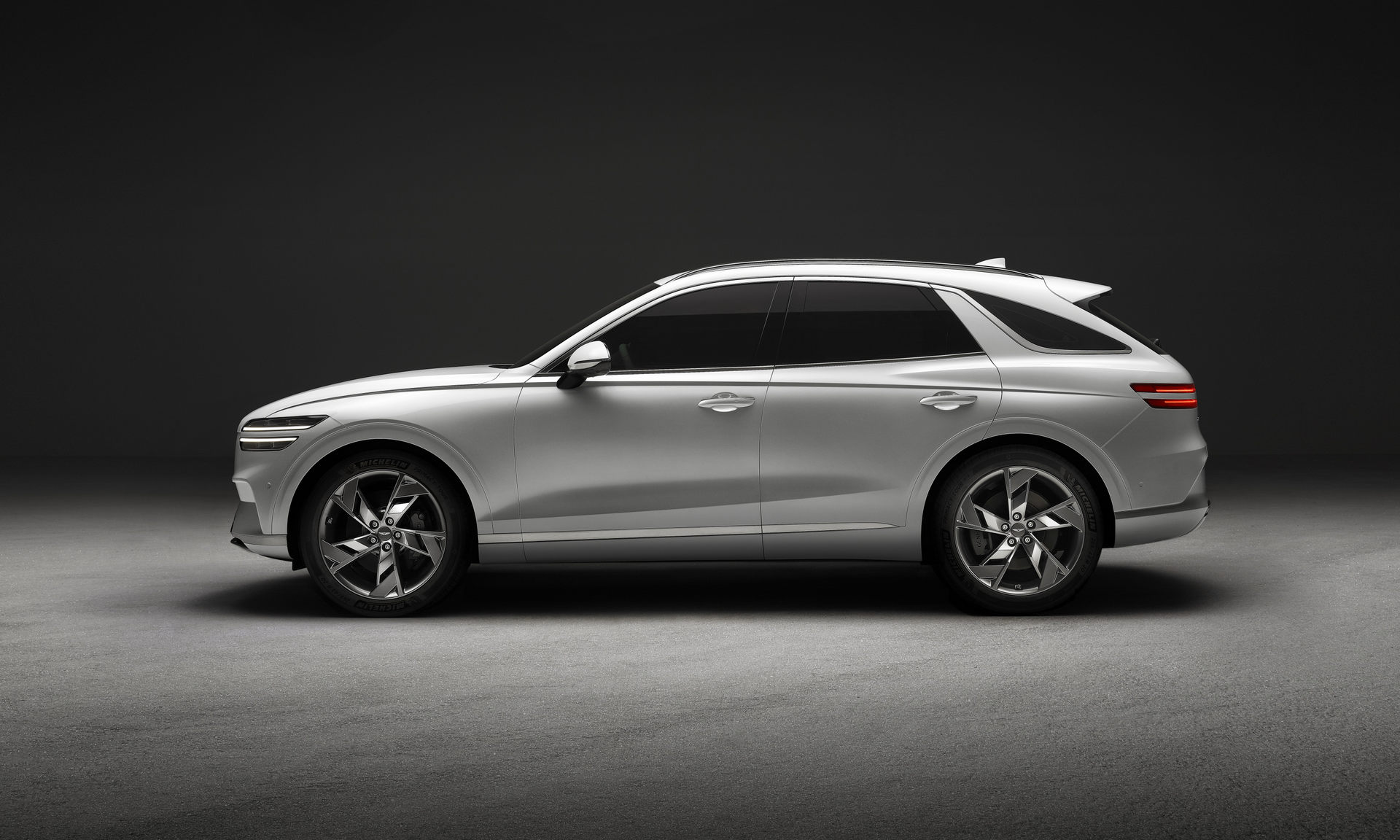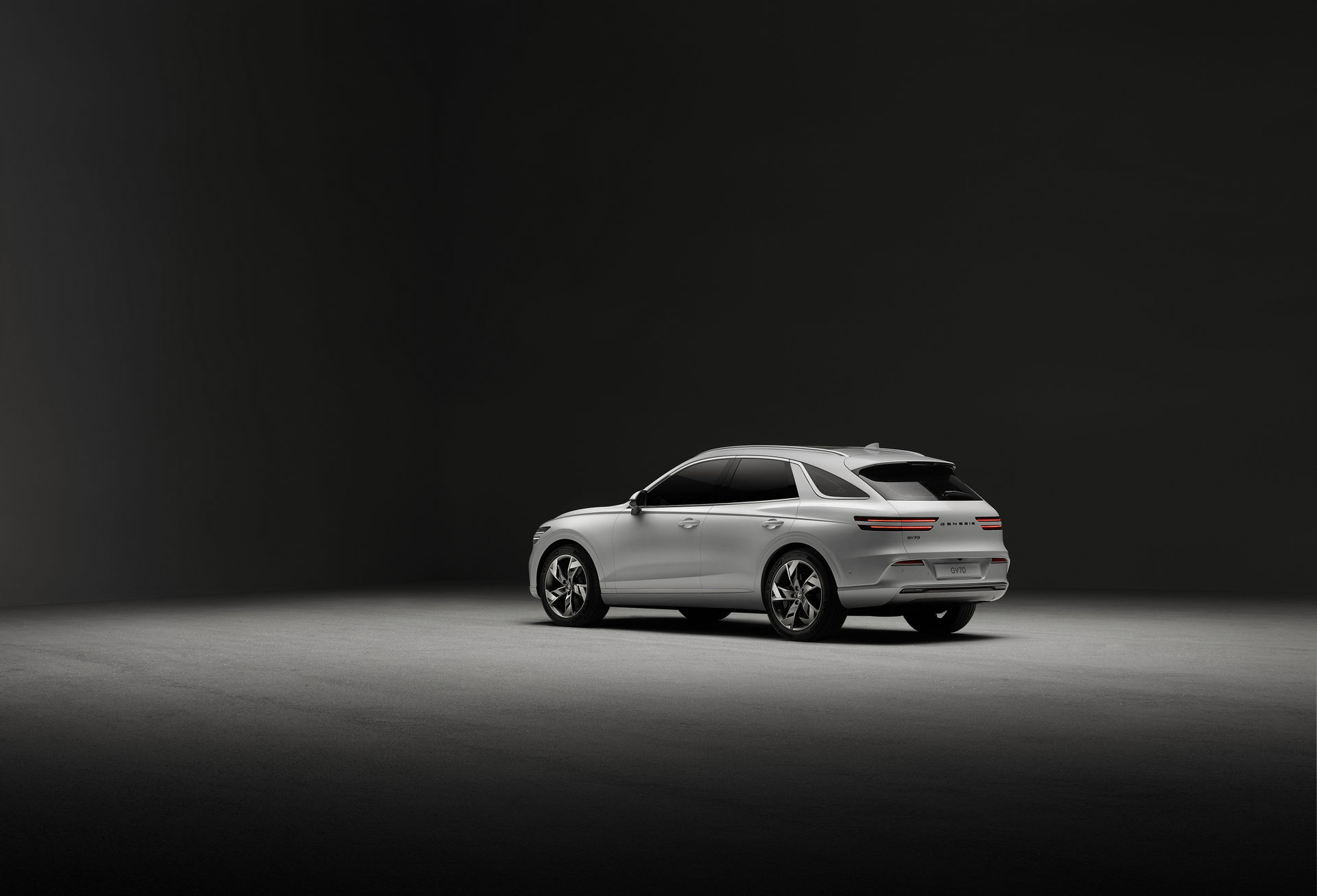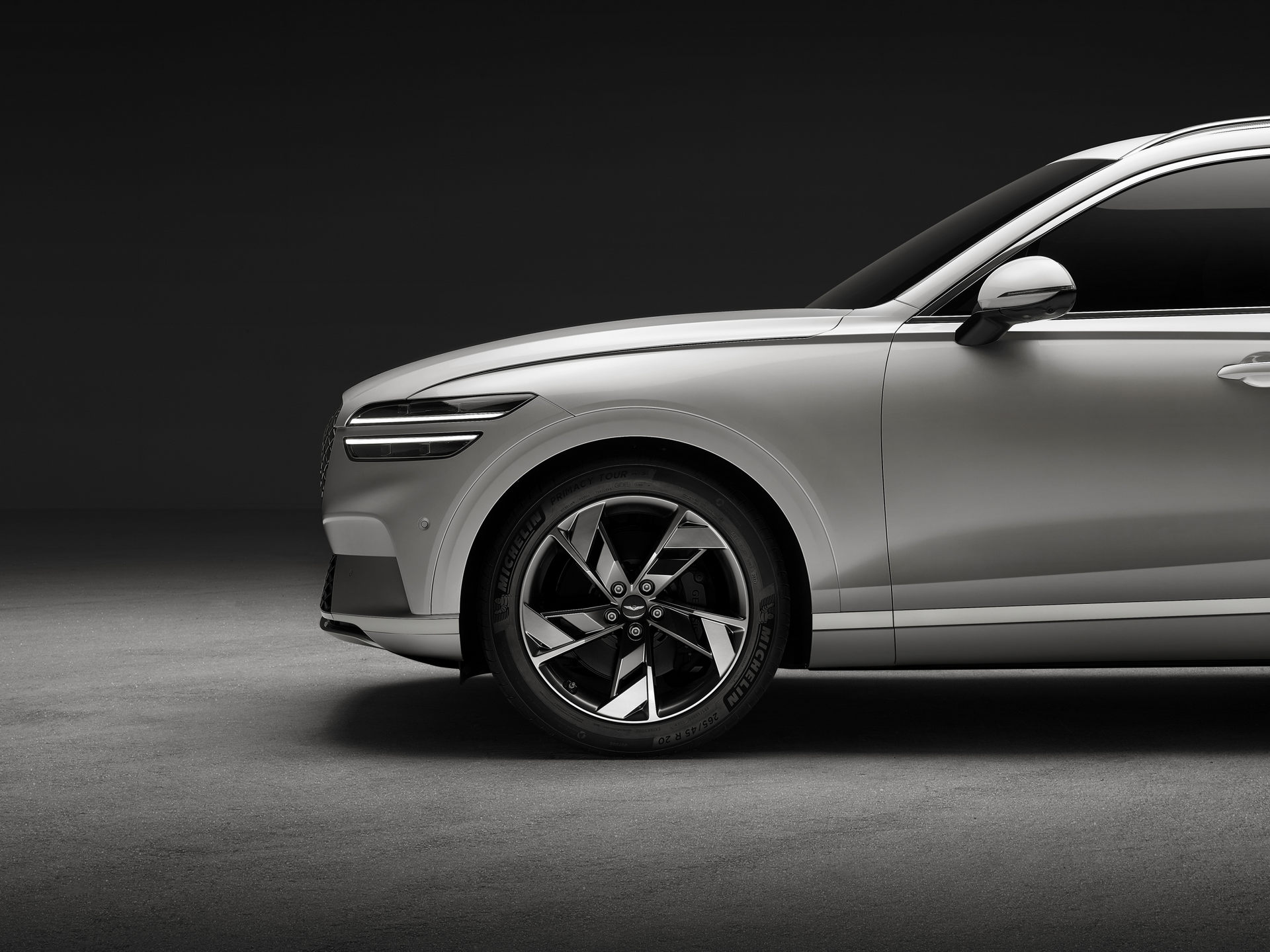Genesis has taken off the covers to the 2022 Electrified GV70 at the Guangzhou Auto Show in China.
The all-electric version of the GV70 SUV follows in the footsteps of the Electrified G80 sedan that was introduced earlier this year. It will launch in select markets from next year and while pricing details haven’t been confirmed, is expected to carry a premium over existing petrol and diesel models.
Powering the Genesis Electrified GV70 are a pair of electric motors that combine to deliver 482 hp (360 kW) and 516 lb-ft (700 Nm) of torque in Boost Mode. This is enough to propel the SUV to 62 mph (100 km/h) in an impressive 4.5 seconds.
Check Out Our 2021 Guangzhou Auto Show News Hub Here
Genesis hasn’t revealed the capacity of the SUV’s battery pack but has confirmed it uses the same 400V/800V multi-rapid charging technology as the likes of the smaller GV60 and the Hyundai Ioniq 5. Just 18 minutes are needed to charge the battery from 10 per cent to 80 per cent when plugged into a 350 kW rapid charger. The Electrified GV70 can travel a claimed 400 km per charge on the Korean testing cycle.
Read Also: Lucid Air Named Motor Trend’s Car Of The Year, Genesis GV70 Takes Out SUV Honors
Like other electric Hyundai and Genesis models, the Electrified GV70 also features a Vehicle to Load feature that supports 3.6 kW of charge, allowing owners to plug in various electric appliances.
Genesis has also equipped the model with a Disconnector Actuator System (DAS) that can automatically connect or disconnect the motor and driveshaft depending on the driving conditions. A dedicated e-Terrain mode has also been developed, as has an Active Noise Control-Road (ANC-R system).
From a visual standpoint, not much differentiates the Electrified GV70 from a standard model. The most significant change is the fitment of a revised G-Matrix grille that houses a hidden EV charging port. The lack of tailpipes also helps to clean up the rear-end of the electric SUV.
Some minor changes have been made inside, including the fitment of paddle shifters to adjust the regenerative braking, a Boost button the steering wheel, a smaller central tunnel, and the use of more eco-friendly materials.



